Tanks are not outdated
At the beginning of the war, Russia suffered colossal losses of armored vehicles, in particular tanks. In numerous videos, tank columns, as if in a shooting gallery, were shot from anti-tank missile systems and hit from the air with the help of drones. According to the latest available estimates , the RF Armed Forces have lost half of the pre-war fleet of the most common T-72 tanks. There was immediate talk about the decline of the tank era, some experts called them the platform of the 20th century, implying a fundamental vulnerability to modern anti-tank weapons.
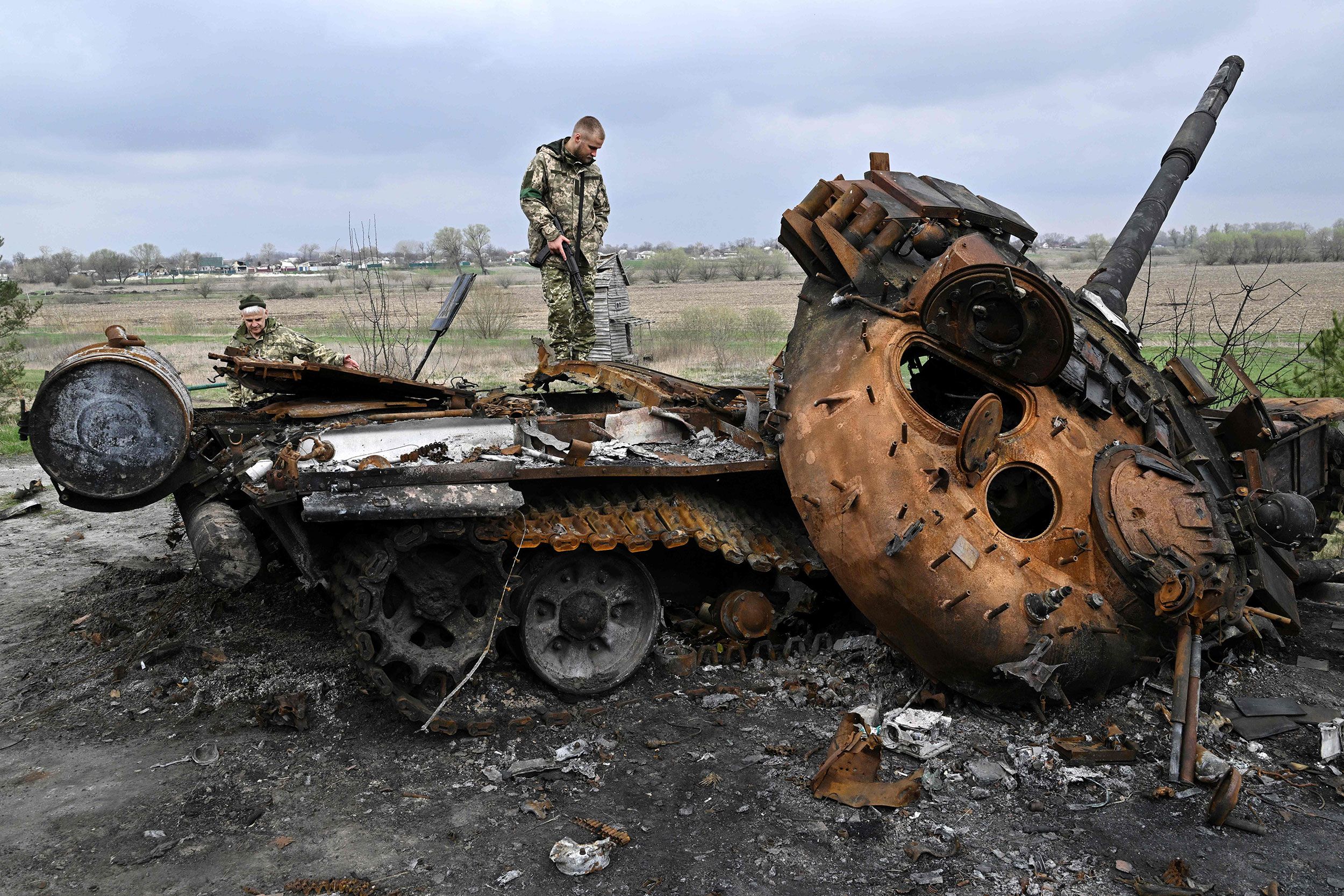
But tanks are by no means obsolete and not at all such an easy target as it seems at first glance. At the beginning of the war, the Russian command used them incorrectly – without infantry support, without air cover, in isolation from supplies. Many tanks were abandoned because they ran out of fuel and / or ammunition, due to technical breakdowns and lack of spare parts. The fighting only confirmed that tanks cannot act alone and need logistical support.
After all, if the tanks are outdated, then why is Kyiv so persistently asking the allies for their supplies? The answer is obvious: without large mechanized formations, the task of liberating the lost territories is impossible. As well as the Russian offensive with strategic goals is difficult to imagine without tank units.
David Gendelman, independent military expert (Israel):
The Russian-Ukrainian war once again showed that it was too early to bury a tank. A tank is a combined arms weapon that combines protection, mobility and firepower, and there is no replacement for this weapon at the moment. Tanks are widely used in this war, and it’s not for nothing that the Ukrainians demand more and more of them from the allies, even of the old types, and the Russians are trying to expand the production of new ones and restore old tanks from storage: both sides urgently need tanks and they are doing their best to increase their quantity.
In terms of the use of tanks in conditions of saturation of enemy troops with anti-tank systems, which characterizes this war, we see confirmation of the experience of recent decades: at the current stage of the eternal competition between spear and shield, emphasis should be placed on active defense systems (KAZ). The Russians, despite numerous still Soviet and modern developments – "Drozd", "Arena", "Afghanit" – now practically do not have KAZ in the troops, just a couple of dozen pieces for thousands of tanks. A similar situation is with the Ukrainian "Barrier", which is not serially available in the troops. And this absence leads to visible results. Complexes such as the Israeli Trophy, which are used in the Israeli army in series and are already being purchased by the US Army and the Bundeswehr, the Israeli Iron Fist, which are now going into series in the Israel Defense Forces and have already been purchased by the United States and the Netherlands, as well as similar Western developments will receive much more after this war. widespread and increase the survivability and effectiveness of tanks and other armored vehicles on the battlefield.
Artillery is still the god of war
The war with Ukraine best fits the description of a large and extended artillery duel. Researchers at the Royal United Service Institute for Defense and Security Studies, RUSI) pointed out that at the beginning of the war the ratio of cannon and rocket artillery was only 2:1 in favor of Russia, and by the summer the ratio had risen to 10:1. It was during that period that two approaches to the use of artillery took shape.
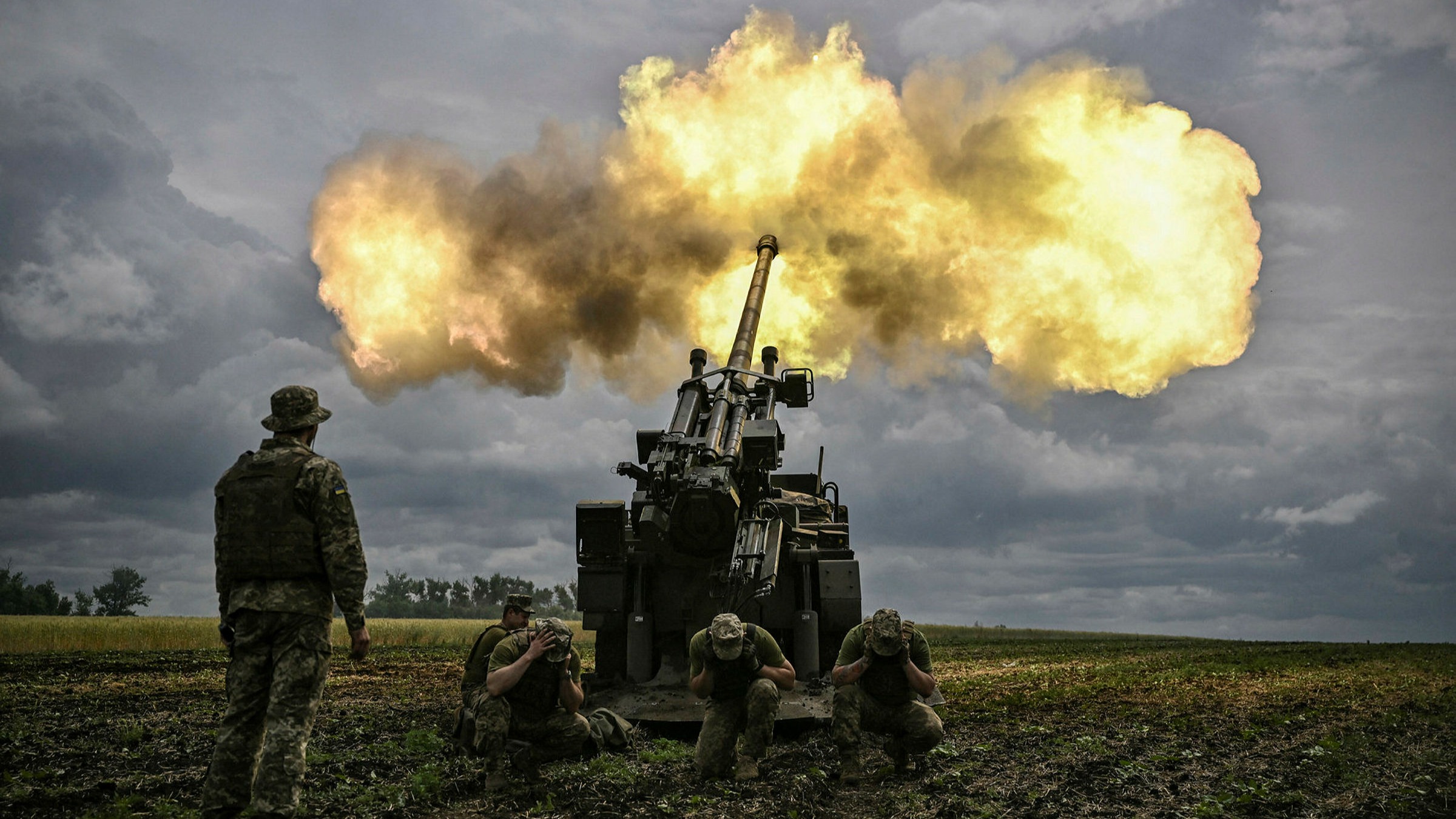
The Russian campaign consisted of a “superconcentration of artillery” or a “barrage of fire” that razed the enemy’s defensive lines from the face of the earth (often along with “liberated” cities), but required a mind-blowing consumption of shells at a level of up to 60 thousand pieces per day at peak moments. Ukrainians, after receiving high-precision artillery systems such as American HIMARS and French CAESAR from Western allies, focused on strikes in the depths of defense against warehouses, bases, command posts.
With the help of the "barrage" of the Armed Forces of the Russian Federation, they achieved the last major successes in the Donbass, but naturally they came to a serious shortage of shells. "Shell hunger" today is the main limiter in the conduct of offensive operations, as can be learned from the fierce debate between the founder of Wagner PMC Yevgeny Prigozhin and the leadership of the Ministry of Defense.
In turn, the Armed Forces of Ukraine, thanks to long-range high-precision artillery systems, ensured the success of the counteroffensive in the Kharkiv region in the summer and autumn of last year and forced Russian troops to withdraw from the right bank of the Dnieper in the Kherson region, leaving Kherson. At the same time, the Hymars and Caesars are not able to replace massive fire support on the line of contact.
David Gendelman, independent military expert (Israel):
The use of artillery in this war is characterized by the fact that both the Russian and Ukrainian sides follow the Soviet school: "Artillery is the god of war." Therefore, both the Armed Forces of the Russian Federation and the Armed Forces of Ukraine use artillery quite extensively, this is their main strength and main argument on the battlefield. The problem is that they do not have Soviet capacities and Soviet stocks, so both sides are now experiencing shell hunger and massive barrel wear. Ukraine is seeking more artillery and ammunition from its allies and has recently launched its own production of shells, while Russia is expanding its production capacity.
As for the competition between approaches of quantity and quality, such as "barrage or precision", which is often said, this is not quite the right opposition. All modern armies are expanding the range of high-precision munitions for cannon and rocket artillery (Excalibur, Krasnopol, 9M544, GMLRS, etc.), and this direction will continue to develop. But this does not completely replace the mass of the volley, different fire missions require different means, therefore, in addition to quality, you still need quantity. And in general, with regard to artillery, the new US Army FM 3-0 field manual, released in October 2022, did not just replace “fire” with “firepower” and moved it from sixth place to second in the list of combat power components according to compared to the previous edition in 2017. This is one of the lessons of the Russian-Ukrainian war.
Drones are more important than fighters
The Ukrainian military campaign surprises observers with the insignificant role of aviation. Almost all tasks in the air, which traditionally lay on combat aircraft, are now performed by unmanned systems. Despite the huge quantitative advantage, the Russian Aerospace Forces almost do not penetrate the airspace behind the front line, fearing Ukrainian air defense. Ukraine likewise prefers not to risk the few remaining aircraft in service.
Russian military experts state with some surprise: “It turned out that even in the conditions of air supremacy won, attack aircraft cannot carry out tasks in full force either at the forefront, let alone in the depths of the enemy’s territory, as long as he uses even a limited amount of air defense systems, receiving full-scale reconnaissance information and target designation from radar surveillance and surveillance systems, air and space reconnaissance assets of NATO countries.
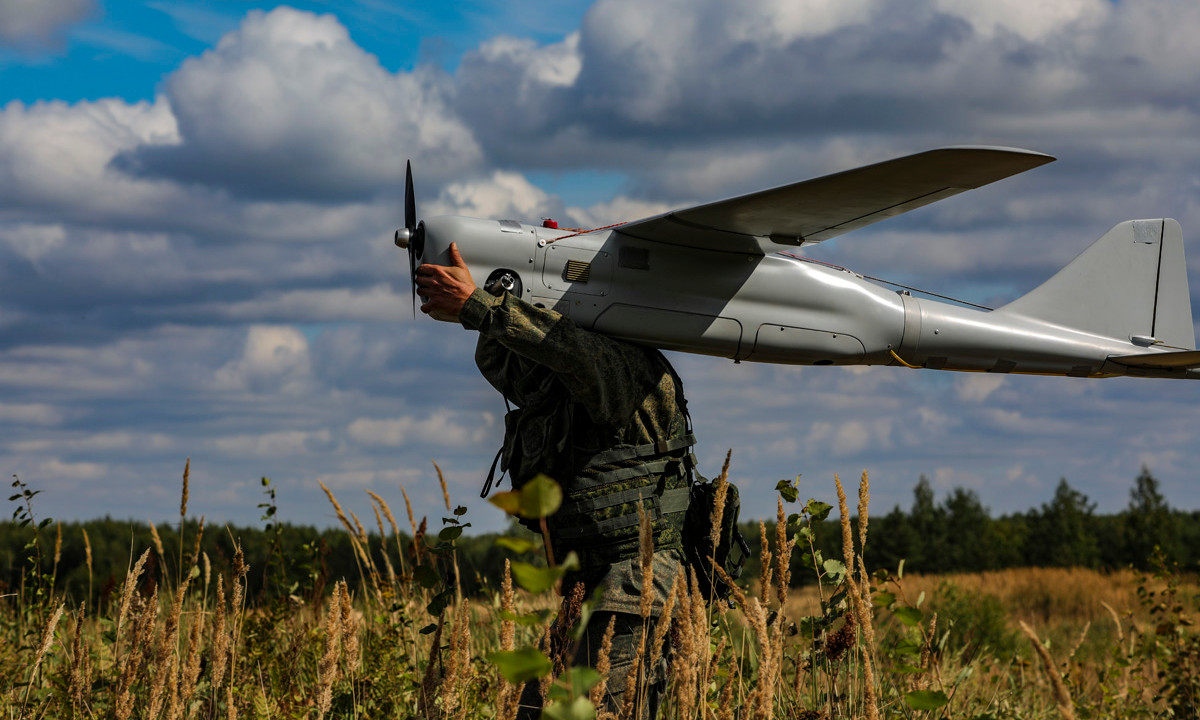
Western analysts believe that, quite likely, the very concept of the use of air forces is changing before our eyes. Cheap and relatively unpretentious drones are replacing extremely expensive and difficult to operate manned vehicles, and loitering ammunition and projectiles such as the Iranian Shaheds and even the modernized Soviet Tu-141 Strizh to some extent replace the strike potential of fighter and bomber aircraft.
Even the simplest commercial quadcopters provide superiority at the tactical level, since they allow you to open enemy positions, maintain objective control, and adjust fire. Without drones, the front line unit literally goes blind. Quadcopters with a drop device and suspended grenades or shots to a grenade launcher regularly "nightmare" the enemy – and from both sides.
First drone war
The technical revolution in military affairs, launched by the Russian-Ukrainian war, concerns not only unmanned aerial systems, but also autonomous or remotely controlled vehicles in general. Journalists, with some degree of exaggeration, call the events in Ukraine “the first war of drones” , meaning that for the first time in the course of a large-scale conflict, autonomous equipment is used in the air, on land and at sea at all stages of the battle.
For the first time in history, Ukrainians carried out several operations with the help of sea drones: unmanned kamikaze boats attacked ships of the Black Sea Fleet at their base in Sevastopol and port infrastructure in Novorossiysk. Experts believe that the attacks carried out are comparable in their impact on the future development of the fleet to the British carrier-based air raid on the Italian Taranto in 1940 – a turning point in the strategy of using aircraft carrier forces.
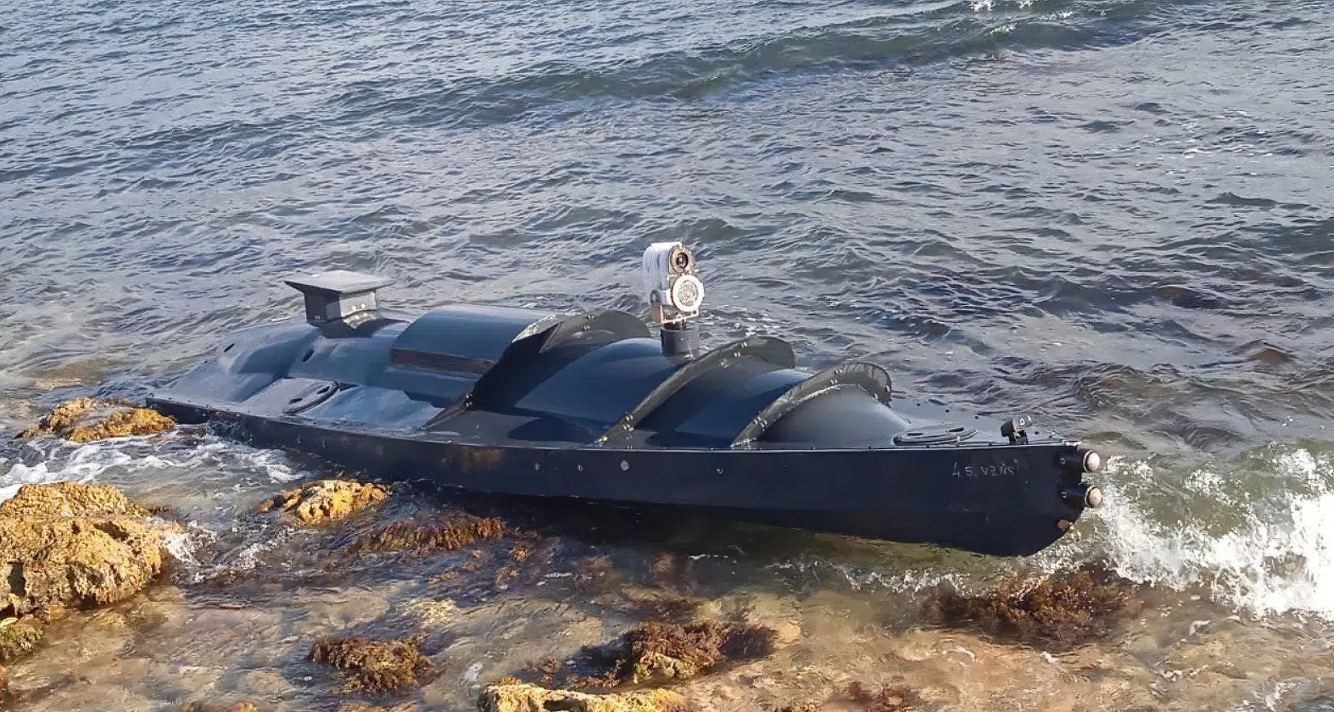
On land, everything is more modest. The Armed Forces of Ukraine are receiving tracked unmanned robotic systems THeMIS developed by the Estonian company Milrem Robotics in the configuration of evacuation and logistics vehicles. And the former head of Roskosmos, Dmitry Rogozin, delivered several prototypes of the Marker wheeled autonomous robot, ambitiously called the “Leopard Killer,” to the war zone.
Hierarchy doesn't work
Since the time of the classic of military science, Karl von Clausewitz, it has been known that success in war is determined by the ability to adapt and turn to your advantage the circumstances of space, time and relationships generated by the combat situation. The war between Russia and Ukraine demonstrated quite clearly how the process of adaptation and training proceeds in different ways and how this is connected with the organization of the military machine and, probably, the state as a whole.
By some accounts , the Ukrainian army proved more successful in adapting due to higher standards of training and freedom in initiative on the battlefield. Despite the fact that the General Staff of the Russian Armed Forces has decisively changed both the tactics and the strategy of the Ukrainian campaign several times, strict centralization, strict hierarchy in the decision-making process, as well as lack of accountability to society, a culture of tyranny and "fraud" level out any advantage in technology and firepower .
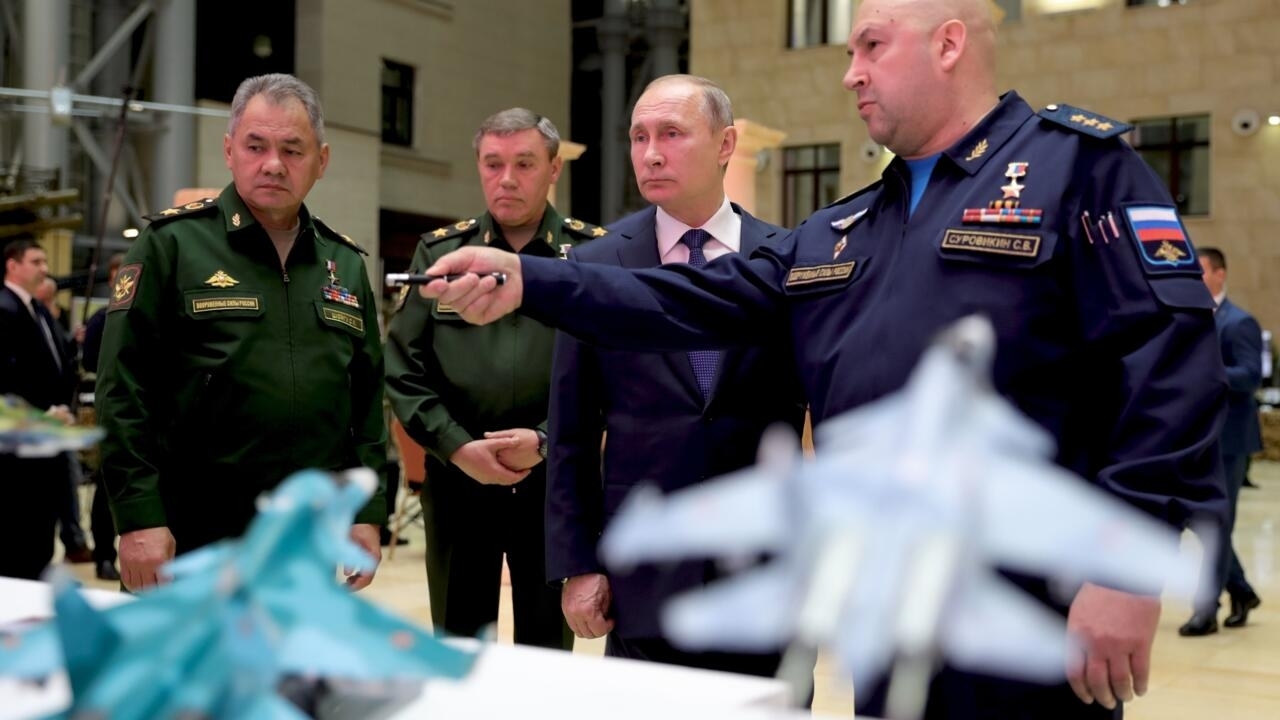
It is likely that the point is not only in the vices of the Russian and, accordingly, the advantages of the Ukrainian armed forces, but also in what models of the socio-political structure have developed in Russia and Ukraine. It is hardly worth expecting that under an authoritarian regime based on corruption, nepotism and extreme levels of inequality , the army will turn out to be an institution based on other principles. At the same time, the network structures and practices of horizontal interaction that permeate society set a completely different framework for the military machine.
Pavel Luzin, expert on Russian foreign and defense policy, political scientist, visiting fellow at the Fletcher School, Tufts University (USA):
The year of the war showed that an authoritarian and non-market system, driven by the goal of a narrow group of individuals to retain at any cost their monopoly on power and control of key assets, will always be a source of aggression. But such a system, being more evil, in organizational terms, always loses to the system that is built on the principles of self-organization and feedback, and hence freedom. At the grassroots level, nothing fundamentally new has happened, everything was clear before and once again confirmed in practice: the ability to take the initiative, think flexibly and make decisions based on constant access to up-to-date information (communication systems, intelligence, etc.) , is more efficient than a rigid multi-layer hierarchy.
Logistics and supply at the forefront
NATO Secretary General Jens Stoltenberg has been repeating in recent weeks: the war in Ukraine is becoming more and more distinctly a competition of logistical systems. In a broad sense, this means how successfully Ukraine's NATO allies and Russia produce and accumulate military equipment, ammunition, equipment, organize repairs and maintenance, and timely delivery of food and fuel to the front line. Army logistics and supply include the capacities of industry, transport, warehousing, as well as accounting, control, distribution, etc.

As a report by the American Institute for the Study of Modern Warfare (Modern War Institute, MWI) elegantly puts it, "logistics determine your destiny." Especially in the type of war of attrition that is going on in Ukraine. Actually, the prospects for any offensive operations are tightly tied to the throughput of logistics systems. For this reason, for example, Russian troops, due to a lack of trucks, simply cannot maintain combat operations at a distance of 160 km from railway supply lines.
Quantity no longer translates into quality
Before the start of the Russian invasion, Western analysts and the military seriously believed that the Ukrainian government would hold out for only a few days, and it cannot be said that these were unreasonably gloomy forecasts. The Kremlin spent huge amounts of money on the rearmament program, the army performed well in limited-scale operations in Crimea, eastern Ukraine and Syria, and Russia had an absolute quantitative advantage in all categories of equipment and a relative advantage in personnel.
As it turned out, the balance of power on paper does not matter in case of failed planning and command. For a long time, the so-called NWO did not even have a commander, and the officers did not know how to explain the goals of the invasion to the soldiers. Over time, the RF Armed Forces lost their advantage in manpower due to losses and several waves of mobilization in Ukraine, but “meat assaults”, when light infantry almost without artillery support attacks the enemy’s fortified positions, have not disappeared anywhere.
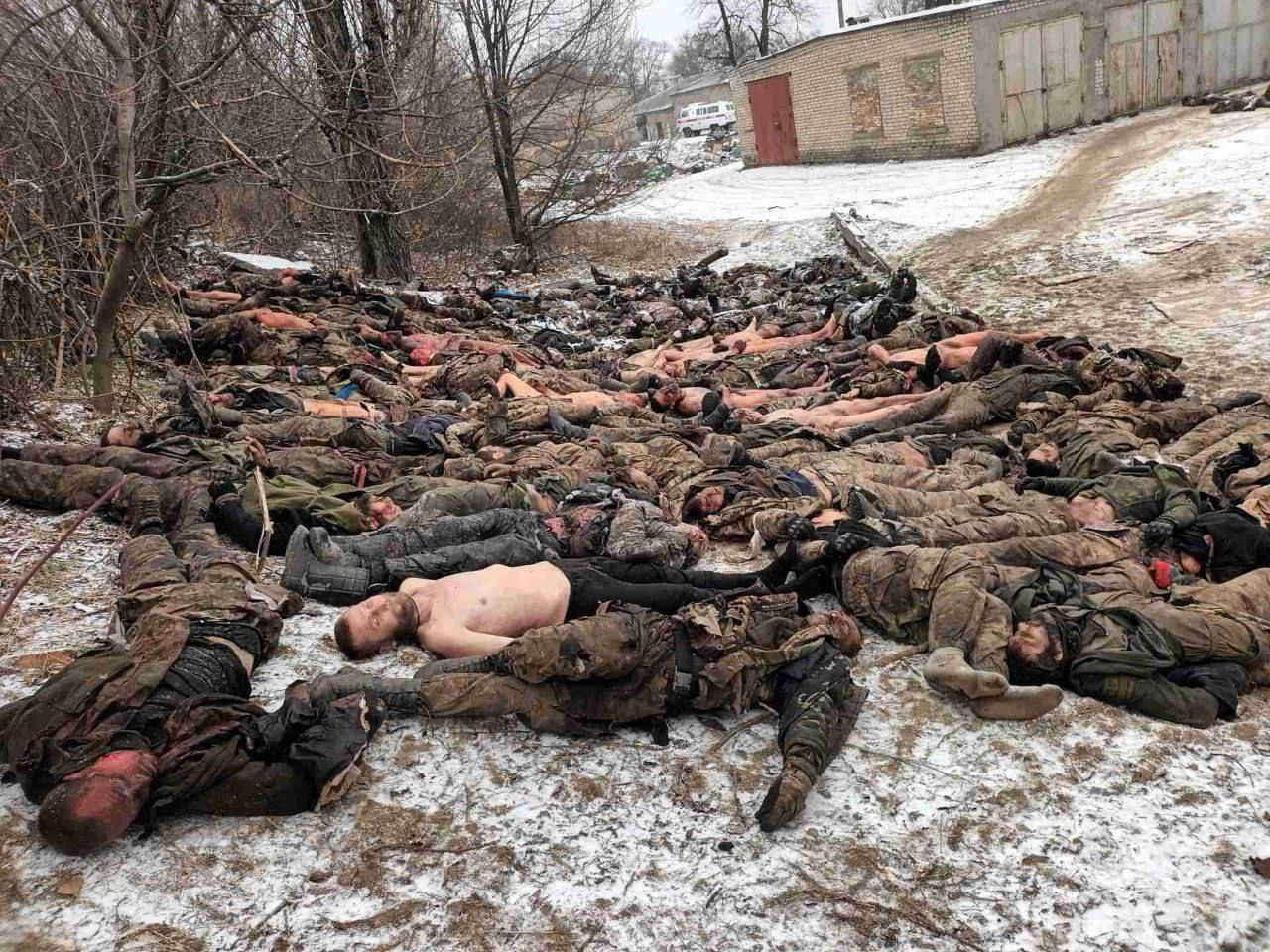
Especially “good” tactics “to shower the enemy with corpses” has proven itself in those sectors of the front where the mercenaries recruited by the Wagner PMC operate. It must be admitted that it really works, but only when people with sledgehammers stand behind the backs of the fighters. And the results are modest anyway: according to Western estimates , Russian troops lose up to 2,000 men to advance 90 meters.
The practice of storming the fortified positions of the enemy without engineering reconnaissance and artillery preparation, relying solely on the human mass, refers to the experience of not even the Second, but the First World War. With such an attitude towards personnel, which excludes investment in human capital (training, training, equipment), no investment in equipment and weapons systems will be justified.
Frank Ledwidge, former British military intelligence officer, senior lecturer at the University of Portsmouth:
I do not think that the principles of organizing and managing combat operations have changed; rather, they have become stronger. NATO and the West, busy for the past twenty years with senseless wars and redeployments, have forgotten that a war against an equal enemy will require mass character. Success will not be achieved through information operations, hybrid warfare (a particularly ridiculous idea), or other quasi-shamanic means. The last year has seriously increased the importance of the three components of combat power: the material one – mass, quality and training, the conceptual one – good doctrine implemented by sound leadership, and the moral component, namely the military advantage gained by developing and maintaining the will to fight.
Privateers on the battlefield
Observers note the surprising similarity of the military campaign in Ukraine with the wars in the Middle Ages and early modern times, when regular armies, volunteer militias, various mercenaries and similarities of private security companies fought side by side. A hodgepodge of this kind is present on both sides of the front, but the role of non-state actors in the current conflict does not end there. More important than Wagner PMC fighters are definitely private individuals and business representatives.
For example, the OSINT industry, represented by NGOs, commercial companies and individual enthusiasts, analyzes incredible amounts of open data and influences how war is perceived in public opinion and at the level of decision makers. Более того, по некоторым оценкам , сегодня можно говорить, что заметная часть украинской kill chain (процесс выявления целей и их уничтожения на поле боя) отдана на аутсорсинг OSINT-сообществу.
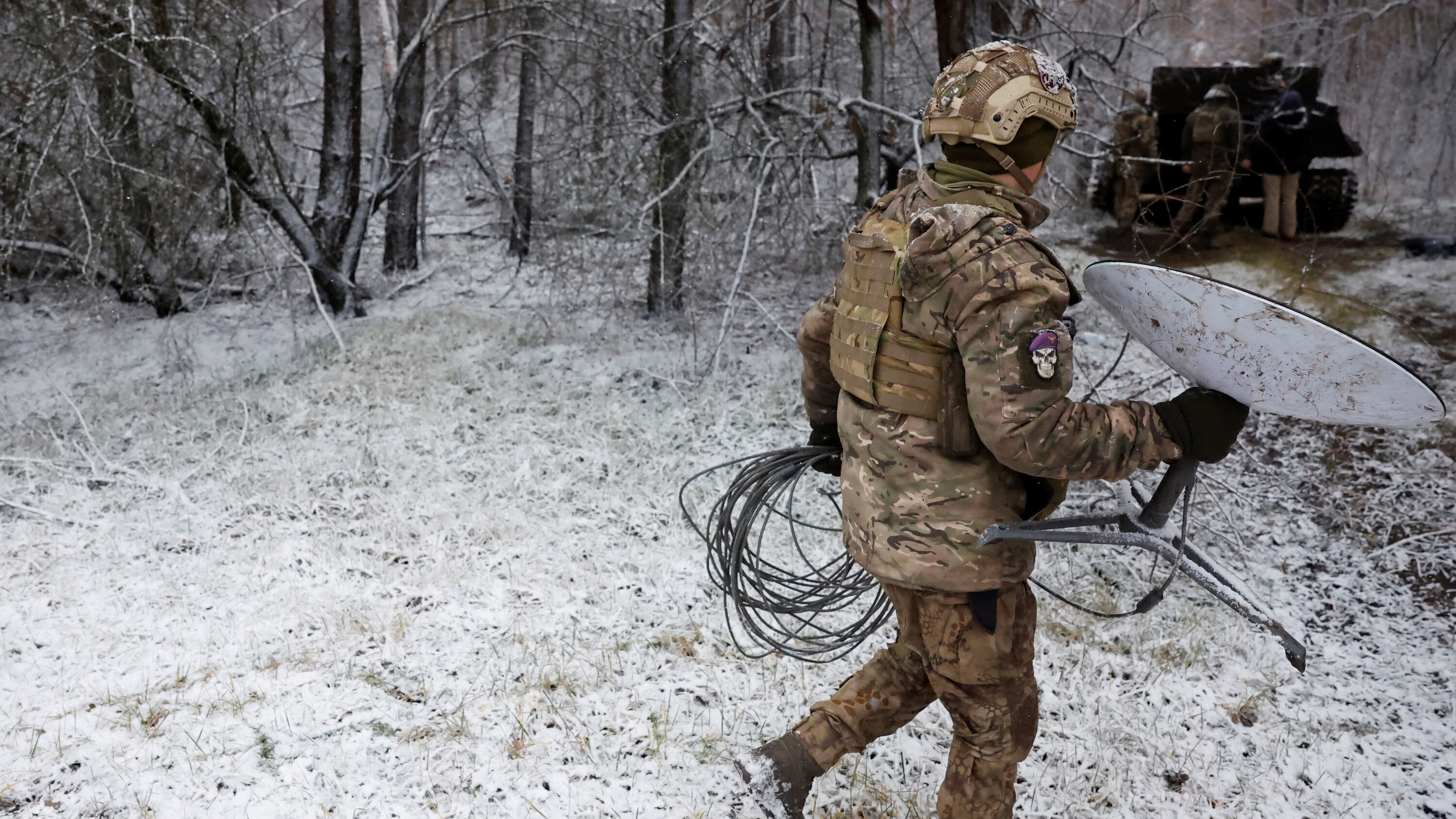
Трудно себе представить, как повернулась бы война, если бы не коммерческие поставщики космических снимков высокого разрешения (Maxar, Planet Labs), гиганты IT-индустрии, предоставившие Киеву свои ресурсы в сфере кибербезопасности и хранения данных (Amazon, Microsoft) или программные продукты и решения (Google, Palantir), ну и, конечно, Илон Маск, обеспечивший Украину спутниковым интернетом через терминалы Starlink.
Георгий Дерлугьян, исторический макросоциолог, профессор Нью-Йоркского университета в Абу-Даби (ОАЭ):
Сегодня принцип легитимной монополии на насилие становится привилегией более богатых стран. Чтобы почувствовать разницу, достаточно побывать в Нигерии или Мозамбике, в Сирии и Ираке, в бандитских фавелах Бразилии и барриос Сальвадора. В Украине мы видим противоположные процессы. Добровольческие батальоны понесли тяжелые потери, приобрели боевую славу, опыт и теперь становятся по сути гвардейскими бригадами ВСУ. Командиры отрядов донбасских повстанцев за небольшими исключениями не смогли пережить свои краткие моменты харизматической славы. Их подразделения уже формально вводятся в состав войск РФ.
Феодализм же — это когда за отсутствием расквартированных римских легионов местные короли и епископы в момент угрозы отчаянно ищут, как бы нанять (и уволить, когда опасность миновала) за деньги или обещание земель отряды местных баронов и пиратов, дружины племенных вождей, викингов или степняков, и далее идут в битву с теми, кто уж как собрался, с каким вооружением. Потребовалась Столетняя война, в которой наиболее профессиональные солдаты стали предлагать свои услуги задорого как натренированные наемники с определенной профессиональной этикой. Отсюда в итальянском Ренессансе столько конных статуй кондотьеров, буквально генеральных контрактников. Пока ничего подобного мы не наблюдаем. Нынешняя война куда более традиционная, чем ожидали футуристы.
Мониторы вместо автоматов
Многие в Украине сожалеют, что в свое время отказались от ядерного оруужия, а теперь оказались в состоянии войны с ядерной державой. Но если верить главе компании Palantir Алексу Карпу, украинские военные располагают преимуществом, сопоставимым с тактическим ядерными оружием, — алгоритмической системой сбора информации и управления боем. Как утверждается, благодаря решениям от Palantir (вроде анализирующего спутниковые данные сервиса MetaConstellation) ВСУ удалось устранить «туман войны» и провести успешное контрнаступление под Харьковом и вынудить российские войска отступить из Херсона.
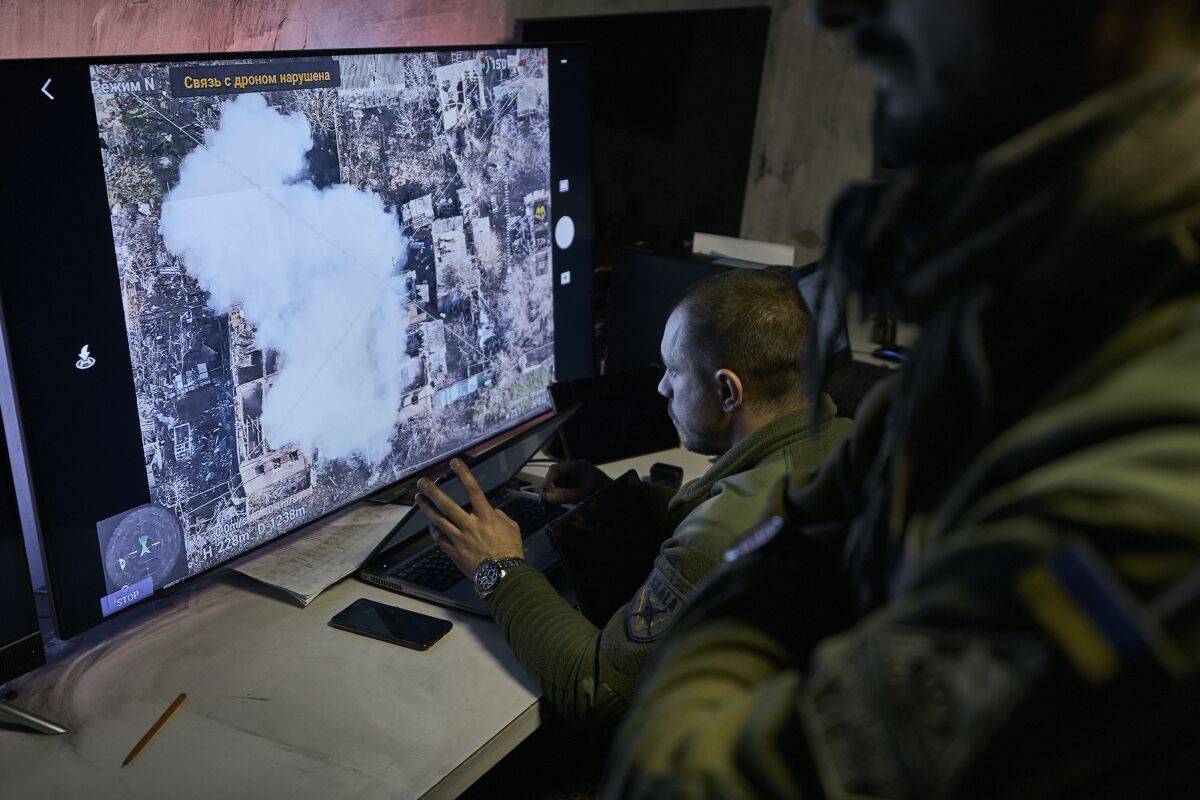
Прошедший с момента вторжения в Украину год доказал, что военное значение условных «мониторов» никак не меньше, если не больше условных «автоматов». Насколько можно судить, ВСУ движутся к созданию единого информационного пространства на поле боя, позволяющего собирать, обрабатывать и распространять оперативные данные и исходя из них действовать. В это пространство С4ISR (Command, Control, Communications, Computers, Intelligence, Surveillance and Reconnaissance — Информационная система по командованию, контролю, каналам связи, компьютерам, наблюдению и разведке) входят различные компоненты? от приложений для мобильного телефона до геоинформационной системы для артиллерии Arta или общевойсковой Delta.
Исходя из украинского опыта, космическая разведка, радиоэлектронная разведка, беспилотные аппараты, дополненные программными инструментами искусственного интеллекта, анализа больших данных и машинного обучения, задают новые стандарты для управления боевыми действиями в части определения наиболее оптимальных путей использования своих сил и средств и уничтожения сил и средств противника.
Фрэнк Лэдвидж, бывший офицер военной разведки Великобритании, старший преподаватель Портсмутского университета:
В военной терминологии НАТО технические элементы связи и управления называются C4 — Command, Control, Communications and Computers. Говоря современным языком, если противник может прервать поток единиц и нулей, то возникает очень реальная проблема. Концептуально это не ново; дешифровщики или электронные помехи имели центральное значение и в прошлом столетии. Я думаю, что Starlink был ключевым фактором для украинского C4, обеспечивая безопасную и надежную связь и позволяя на тактическом уровне использовать другие инновационные и высокоэффективные технологии.
Однако давайте сделаем шаг назад. То, что демонстрирует Украина со всеми этими нововведениями, приспособлениями и возможностями, — это две вещи. Во-первых, преимущества нации в состоянии войны. Будем честными, регулярные вооруженные силы нигде не славятся интеллектом, изобретательностью, открытыми сетями или оригинальностью. Что бы ни утверждала пропаганда, далеко не всегда в них состоят самые яркие и лучшие. Когда вся нация со всеми ее качествами соединяется с военными усилиями и их потенциал высвобождается, подкрепленный яростной решимостью, мы видим результат как сейчас. Поэтому Украина побеждает. Во-вторых, у них за спиной свободный мир с его огромным превосходством в технологиях и финансах.
Ядерное оружие не дает преимущества
В самом начале вторжения Владимир Путин дал понять , что отводит ядерному оружию роль гарантии от вмешательства внешних сил. По всей видимости, статус ядерной державы был весомым аргументом в пользу вторжения — ведь никто не захочет связываться с противником, который может повысить градус эскалации до уровня обмена ядерными ударами. Но расчет не оправдался.
Более того, обладание ядерным оружием в каком-то смысле превратилось в обременение. По мере того как западные союзники Украины переходят все больше «красных линий» в поставках новых типов вооружений, а российские силы неделями штурмуют очередной поселок городского типа на Донбассе, в пропагандистской среде все громче звучат голоса о необходимости нажать на кнопку с целью решительного перелома в войне.

Правда, никаких разумных сценариев применения ЯО на украинском театре военных действий не просматривается. Даже если речь идет о тактических зарядах с тем, чтобы уничтожить стратегически важные мосты, транспортные узлы, аэродромы, или о демонстративном ударе по безлюдной местности, дабы деморализовать противника. Судя по всему, это понимает и сам Путин.
Павел Подвиг, эксперт по ядерной безопасности Института исследований ООН в области разоружения (Швейцария):
На мой взгляд, ход войны в Украине довольно ясно показал, что ядерное оружие совершенно непригодно для решения военных задач. В отсутствие крупных концентрированных войсковых группировок или централизованных узлов снабжения для ядерного оружия попросту нет целей, которые могли бы оправдать его применение. Ядерное оружие, конечно, обладает значительной разрушительной силой, но эффективность его применения против укрепленных объектов и военной техники сравнительно невелика. В чем ядерное оружие не знает себе равных, так это в способности одномоментно уничтожить большое количество людей — десятки или даже сотни тысяч человек. Других задач оно решать не может.
Теоретически можно представить себе ситуацию, в которой ядерное оружие может быть использовано в стратегических целях, для коренного изменения характера войны путем слома воли противника к сопротивлению. Примерно так обычно оцениваются бомбардировки японских городов в 1945 году. Но в этом случае для достижения эффекта масштаб разрушений должен быть действительно катастрофическим. Понятно, что порог принятия решения о подобном применении ядерного оружия исключительно высок. В течение года, прошедшего с начала войны, практически все страны однозначно заявили о недопустимости даже угрозы применения ядерного оружия, не говоря уже о его использовании. Все это позволяет надеяться на то, что возможность применения Россией ядерного оружия против Украины практически полностью исключена.
Об этом говорит и то, что в официальных заявлениях российского руководства ядерное оружие упоминалось исключительно в контексте возможного ответа на вмешательство западных стран в конфликт. Расчет, очевидно, на то, что угроза подобного ответа позволит лишить Украину поддержки союзников. В определенной степени этот расчет оправдался, но и здесь российское руководство столкнулось с тем, что угроза ядерной эскалации не в состоянии предотвратить материальную и другую помощь Украине. Да, эта помощь могла бы начаться раньше и быть более значительной, но она существует, и ее масштабы постоянно наращиваются.
Кибернаступление не состоялось
Одна из загадок российско-украинской войны — почему вездесущие российские хакеры не сумели нанести Украине чувствительные удары в киберпространстве. За исключением нескольких удачных, но ограниченных по последствиям операций в первые дни вторжения, им особенно нечем похвастать. Особенно если сравнивать с результатами , достигнутыми в предвоенный период.
Один из вероятных ответов заключается в помощи , которую Киеву оказал Amazon Web Services, позволивший оперативно перенести в облако свыше 10 петабайт критически важных данных более 30 правительственных институтов, и Microsoft, предоставивший приоритетный доступ к своим инструментам в области защиты информации.

Другое вероятное объяснение заключается в том, что Кремль просто не планировал масштабных действий в киберпространстве, рассчитывая на скоротечность «специальной военной операции», либо не располагает необходимыми техническими возможностями и компетенциями, чтобы бросать вызов усовершенствованным западными союзниками Украины цифровым системам.
Военную машину приводят в движение микросхемы
В августе 2022 года британский Объединенный королевский институт оборонных исследований (Royal United Service Institute for Defence and Security Studies, RUSI) выпустил доклад под названием Western Electronics at the Heart of Russia's War Machine — «Западная электроника в сердце российской военной машины». Это не художественное преувеличение. Специалисты RUSI, британской некоммерческой организации «Исследование оружия конфликтов» (Conflict Armament Research, CAR), и ряда других организаций выяснили , что новейшие российские системы вооружений, военная техника и ракеты напичканы американскими и европейскими микросхемами.

Западные чипы обнаружились и в попавших в руки исследователей иранских дронах-камикадзе типа «Шахед». Несмотря на то что российские (и иранские) производители успешно обходят экспортные ограничения и всеми правдами и неправдами добывают необходимые высокотехнологичные изделия, в долгосрочной перспективе отсутствие собственной развитой радиоэлектронной промышленности ставит российский военно-промышленный комплекс в незавидное положение.
Пространство борьбы повсюду
Война России и Украины не исчерпывается популярным описанием в виде «чрезвычайно динамичного противостояния сразу в нескольких сферах (на воде, суше, в воздухе, космосе и киберпространстве), где каждая из сторон стремится превзойти соперника в боевой мощи, маневренности и адаптивности». Все это дополняется еще несколькими войнами: энергетической, торговой, санкционной, войной нарративов в медиа и войной лоббистских возможностей (то, что на Западе часто называют weaponized corruption ).
Пожалуй, самый яркий пример «гибридности» конфликта — насколько успешно президент Украины Владимир Зеленский использует средства массовой информации, соцсети, выступления по видеосвязи на международных мероприятиях (вплоть до церемонии вручения музыкальной премии Grammy и разогрева перед Супербоулом) для решения внешнеполитических задач в части влияния на элиты и общественные настроения.
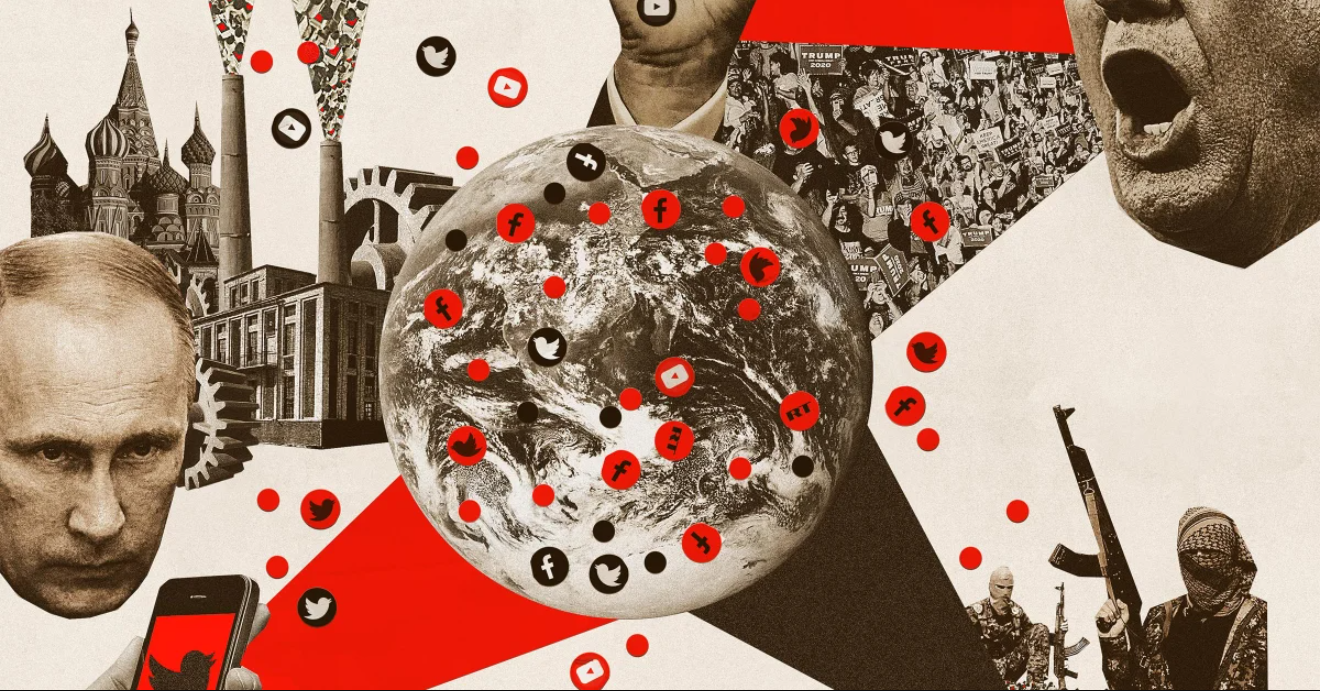
И Украина, и Россия ведут битву в медиапространстве, заполняя его видео-, фото- и аудиоматериалами, компрометирующими противника. Стоит отметить, что война в Украине — первый вооруженный конфликт, в котором в военных целях (в рамках кампаний по дезинформации и психологической борьбы) регулярно фабрикуются видео по технологии deep fake.
Оборона впереди нападения
Украинский конфликт наглядно демонстрирует, какого прогресса за последние десятилетия добились оборонительные вооружения:
- противотанковые средства ограничили применение танков, особенно в городских условиях;
- противовоздушные средства не позволили авиации завоевать господство в воздухе;
- противоракетные средства значительно снизили эффективность российской стратегии ракетных ударов по территории Украины;
- противокорабельные средства вынудили Черноморский флот держаться подальше от украинских берегов;
- противодронные средства позволяют не только нейтрализовывать, но и буквально «уводить» вражеские беспилотники.
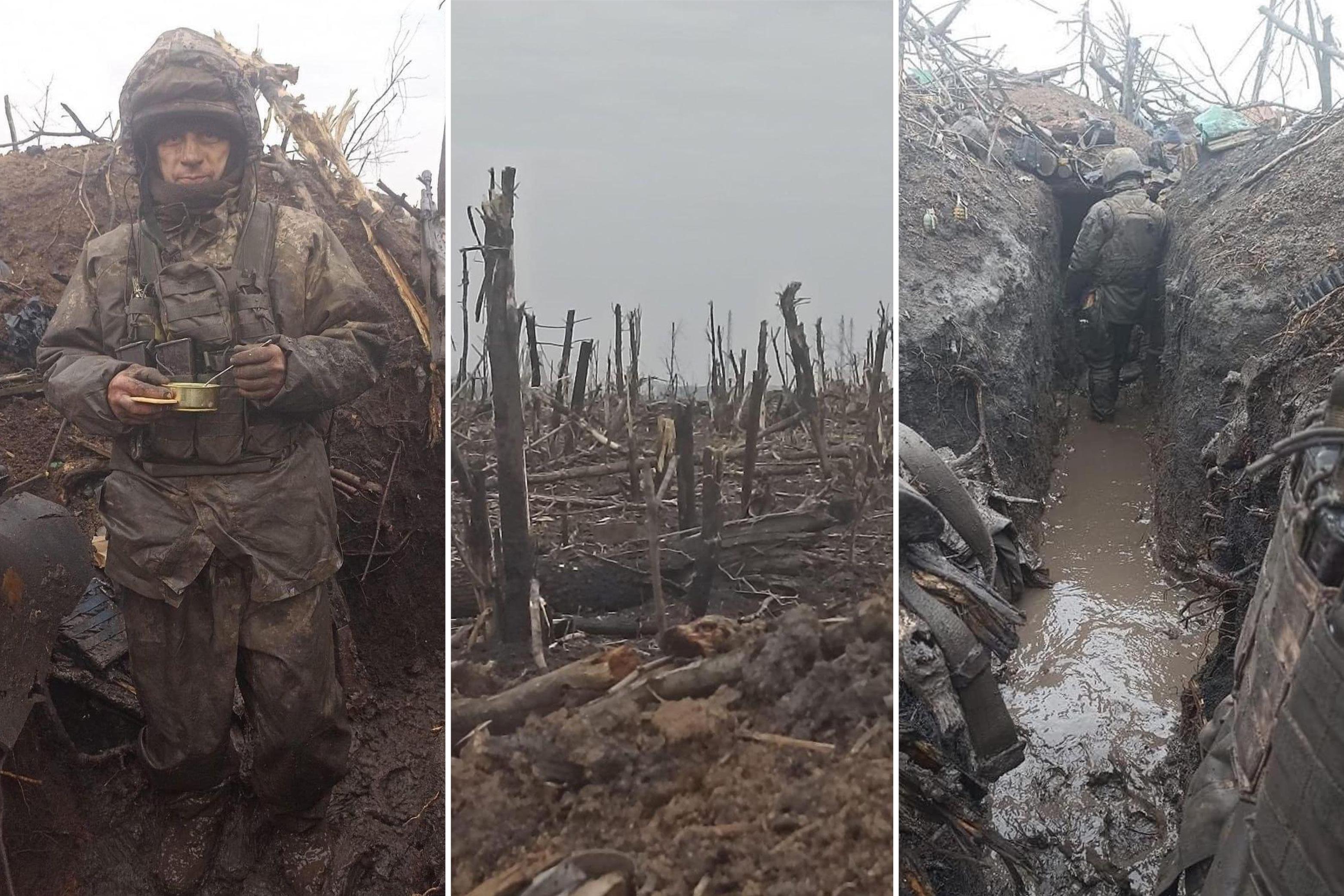
Одним словом, развитие «противонаступательных» систем без всякого сомнения внесло вклад в «позиционный тупик», сложившийся на большей части линии фронта. В перспективе указанная тенденция делает принципиально «ничейными» морское и воздушное пространство на театрах военных действий, создавая там явочным порядком некое подобие зон «воспрещения доступа и маневра» (anti-access/area denial, or A2/AD).
Внешний контроль интенсивности
Способность Украины к сопротивлению российской агрессии, нисколько не умаляя качеств ВСУ, зависит от иностранной военной (и не только) помощи. В стратегическом смысле поставки западной техники позволяют Украине перейти от оборонительной позиционной войны того типа, что была в 1914–1918 годах, к маневренной наступательной войне образца 1939–1945 годов.
Номенклатура и сроки поставок техники и боеприпасов непосредственно влияют на ход боевых действий и тем самым ставят Киев в зависимость от воли политического руководства стран-союзников, которые могут таким образом управлять интенсивностью и масштабами конфликта. Достаточно сказать, что при переговорах о предоставлении новых дальнобойных ударных средств непременно всплывает такой пункт, как гарантии не атаковать ими международно признанную территорию России.
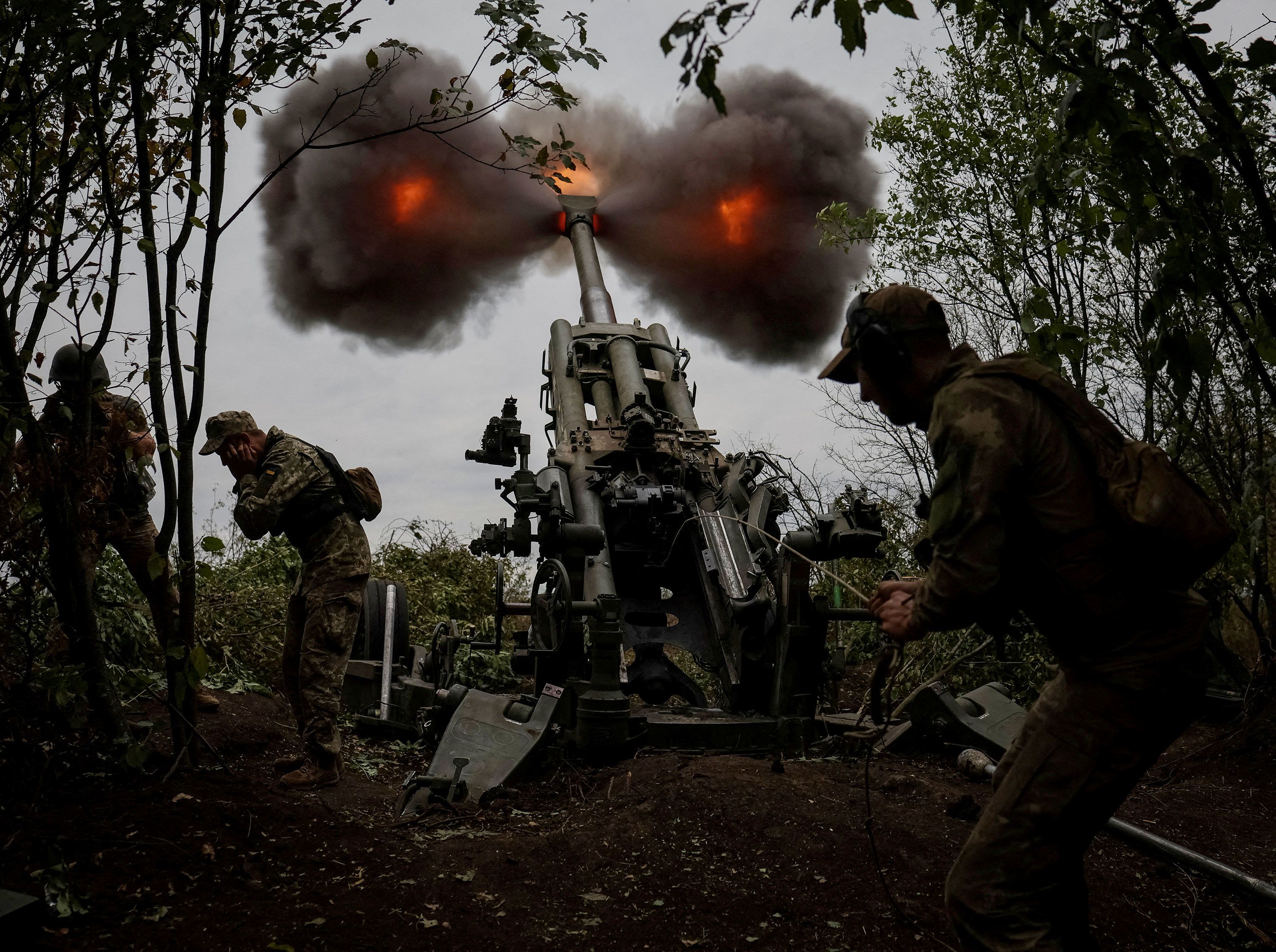
Более того, американцы тайно модифицировали переданные украинским партнерам реактивные системы залпового огня HIMARS, чтобы исключить возможность запускать с них ракеты большой дальности и тем самым снизить риски эскалации с официальной Москвой. С той же целью компания Илона Маска SpaceX ограничила возможности системы спутникового интернета Starlink по управлению дронами.
Одними ракетами нельзя добиться успеха
Последние полгода Россия пыталась достичь решительного перелома в войне в свою пользу за счет массированных ударов дальними средствами поражения по украинской инфраструктуре. План был до безобразия прост и циничен: в период зимних холодов нарушить работу энергетической системы, вызвать гуманитарную катастрофу и заставить украинские власти пойти на переговоры на условиях Кремля.
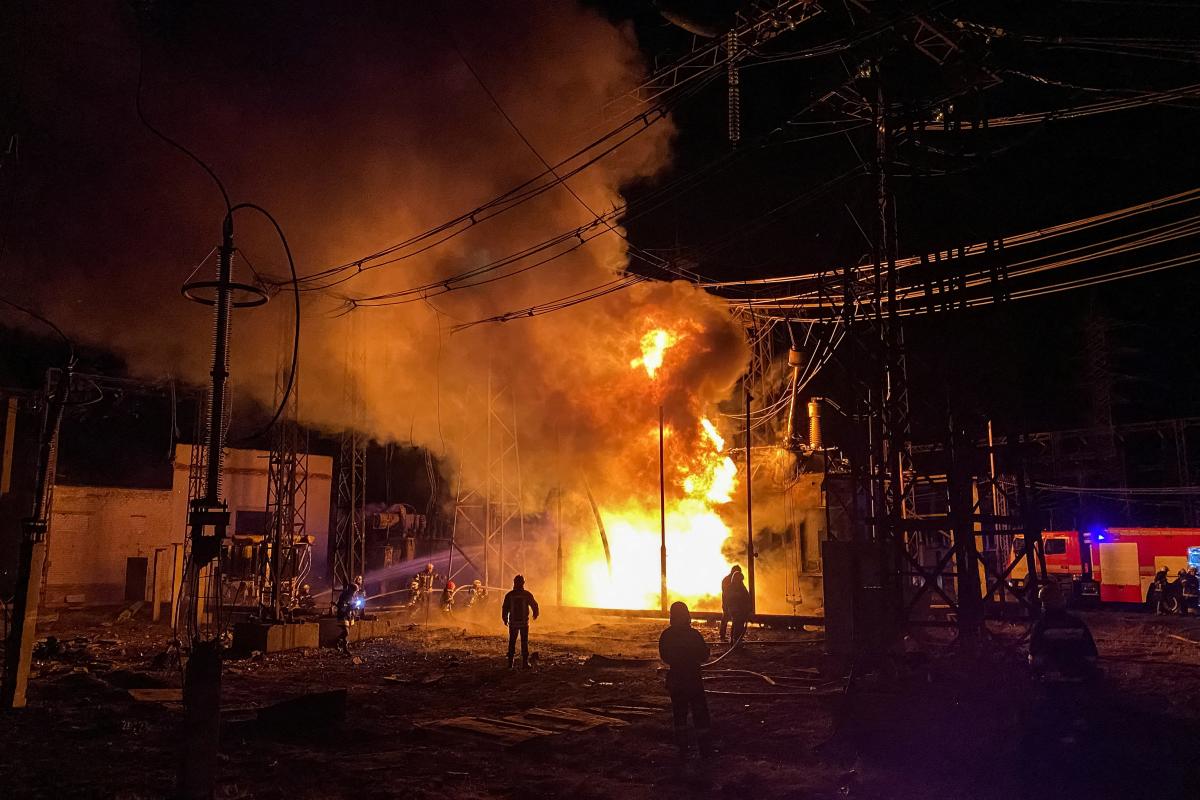
За это время ВС РФ выпустили по Украине свыше тысячи ракет и дронов-камикадзе в рамках 14 волн массированных атак и поразили 112 объектов критической инфраструктуры. Но оставить украинцев без света и тепла так и не удалось — энергетические мощности восстанавливают быстрее, чем ракетные удары успевают их разрушать.
Природу не победить
Все успехи в военной технике и технологиях, предъявленные на суд публики в российско-украинской войне, меркнут перед тем фактом, что, как и сто, и тысячу лет назад, ключевое влияние на ход боевых действий оказывают природно-климатические факторы: погода, перепады высот, особенности рельефа, типы почв, расположение рек и озер.
Провал российской операции по захвату Киева в феврале–марте 2022 года во многом объясняется преобладанием лесисто-болотистой местности. По этой же причине, кстати, маловероятным выглядит возможное новое наступление с территории Беларуси на Западную Украину.
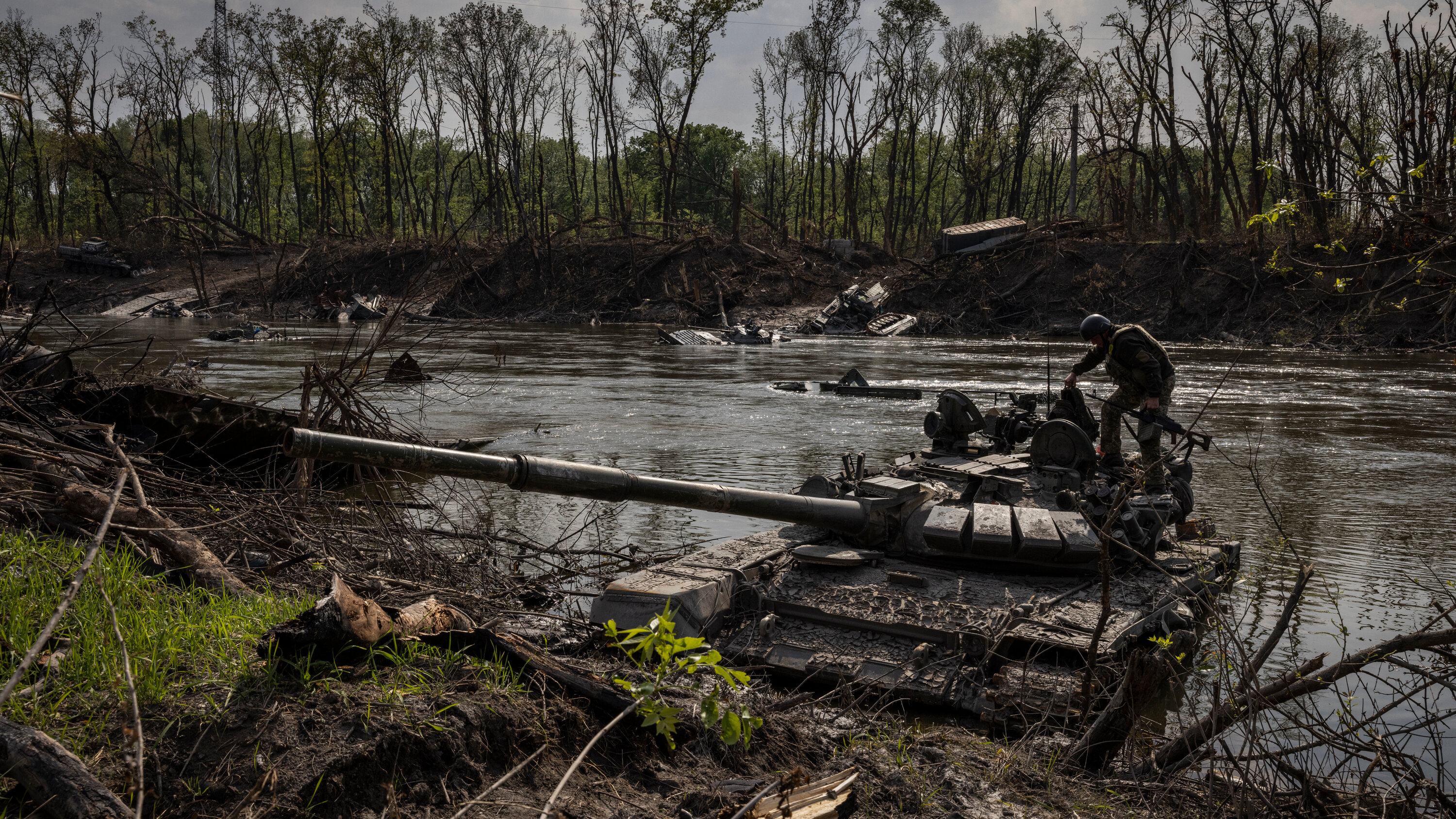
Нынешняя конфигурация линии фронта на юге страны строится вокруг рек и каналов как естественных оборонительных рубежей и переправ через них. Преодоление водных преград по-прежнему представляет собой один из самых сложных с точки зрения военного искусства вид операций.
Война с городами
Как воевали в прошлом? Противники собирались лицом к лицу на каком-нибудь поле и шли друг на друга. Позже на таком же поле появлялись земляные валы, редуты или окопы, но суть от этого не менялась. Одна людская масса против другой на относительно свободном пространстве. Украинская кампания состоит главным образом из боев не в полях, а в урбанизированной среде: городской застройке, инфраструктурных и промышленных объектах.

Донбасс, где последние полгода сосредоточены боевые действия, — по сути, огромная агломерация из жилой застройки, дорог и индустриальных ландшафтов (шахт, терриконов). Феномен войны в городах изучается довольно давно, но события в Украине заставляют по-новому взглянуть на российскую тактику городских боев. Как отмечают эксперты, это не борьба за города, а скорее борьба против них — урбицид. Типичный результат «освобождения» городов Донбасса — груда развалин и массовые жертвы среди мирного населения.


